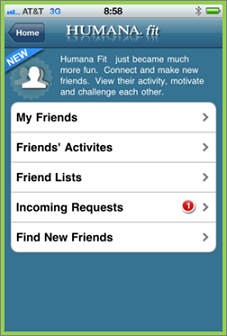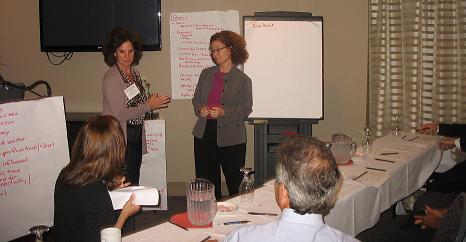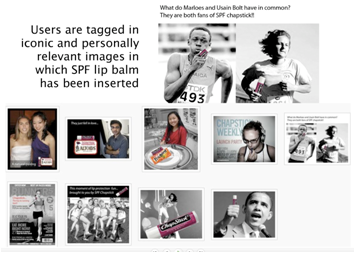
At the recent World Congress mHealth Summit, I led a panel called “Personalizing the Mobile Experience to Drive Consumer Engagement”.
Why is mobile so important and why does it need to be incorporated into all consumer health & wellness engagement strategies?
Pew Research’s May report found that “83% of US adults have a cell phone, and 42% of them own a smart phone”. As mobile phone ownership grows so does the consumers’ expectations about using this device to plan, manage and monitor their personal lives. Consumer- driven companies across financial services, retail, media and entertainment are designing creative ways to engage the consumer through a valuable mobile experience.
Within healthcare, mobile is a cost effective and efficient way to not only generate but also sustain consumer engagement.
Here are several strategic considerations that I presented while introducing the panel topic.
1. Segmentation & Customization. Once a company moves beyond enabling mobile access for all target users, they must think carefully about the varying needs and mobile usage profiles of their different consumer segments. Consider consumer segments which have high mobile technology usage.
Pew Research found that over 87% of minorities such as African Americans and Hispanics have mobile phones and they are more likely than whites to send/receive text messages, use the internet on their mobile phones and have smart phones. What about a mobile texting program educating them about their health condition or motivating them to engage in preventative care?
Frequent business travelers stay connected to their company, customers and family through their mobile phones and tablets. A recent Columbia University study showed the association of business travel and cardiovascular disease. According to the study, this may be caused by their poor diet, lack of exercise and sleep as well as stress. Imagine how mobile can be used to help these travelers manage their health issues and make better decisions while on the road.
Over 75% of teens have a mobile phone and more than half are texting every day based on Pew research. Can you send mobile messages to teens to educate them about staying fit or informing them about ways to manage their diabetes? There is also opportunity on the mobile apps front. I recently participated on a project envisioning mobile solutions to support the mental health of (college) students to avoid depression.
How is Highmark approaching segmentation? Highmark utilizes Forrester’s Technograph Segmentation to prioritize their mobile initiatives. Panelist Lisa Fitting, Director Client Engagement mentioned that when Highmark conducted segmentation research across their member base, two key segments emerged-- “Connectors who use their mobile phone for work and are productivity- oriented” and “Communicators who regularly use SMS” and often use other digital communications. Highmark is using this insight to define mobile initiatives based on these preferences. They also plan to come out with mobile applications targeting specific needs such as “fitness, weight management, diabetes, medication”.
2. Multi-Channel Experience. As consumers move about their daily life, they move from channel to channel. Teens put down their mobile phones when they pull out their laptop computers. When they are through interacting via their computer, it is important that their next mobile interaction reflect their latest online activities.
Humana conducts user experience research to better understand how different types of users interact with their Humana Fit application through their mobile phones and computers. Panelist Tony Tomazic, Director of Consumer Innovation at Humana explains “we understand the strengths of mobile. Through research, we have learned how consumers want to use their mobile phone for tracking and communications regarding personal health and fitness (e.g. saving episodes of activity, receiving reminders and alerts), whereas consumers prefer to use their computers to manage more complex and visual planning of their goals and gather information from their other external devices.”
3. Personalization in Context. While carrying their mobile devices, consumers can use them to receive reminders, review educational messages, track information (e.g. mood, pain levels, fitness and nutrition) as well as search for information to make decisions while on the go.
"Healthline brings both personalization and contextualization to the consumer", explains panelist Ryan Tarzy, VP Business Development. “Aetna members view search results that are both contextual to the issue they are researching (e.g. diabetes), but also personalized based upon their personal health record, location, and covered benefits”.
As you develop your mobile health and wellness strategy, think about the needs of your various consumer segments and their mobile technology profiles. Consider their multi-channel experience of which mobile is only a part. And determine how you can design a mobile strategy which brings new value to the consumer through personalization within the context of their current health, plan coverage and location.
Have you read the Seven Mobile Health Engagers?
 Health and Wellness Incentives & Rewards,
Health and Wellness Incentives & Rewards,  educating consumers about health and wellness,
educating consumers about health and wellness,  mobile engagement for teens,
mobile engagement for teens,  mobile health and wellness texting,
mobile health and wellness texting,  mobile location based services in
mobile location based services in  Consumer Segmentation Health,
Consumer Segmentation Health,  Data Driven Health Engagement,
Data Driven Health Engagement,  Decision Support eHealth,
Decision Support eHealth,  Mobile Engagement Health & Wellness,
Mobile Engagement Health & Wellness,  Personalization eHealth
Personalization eHealth 





